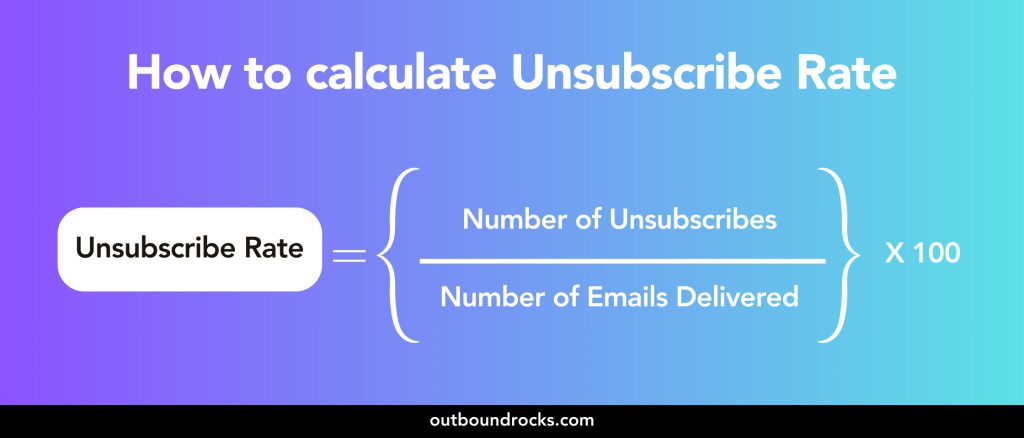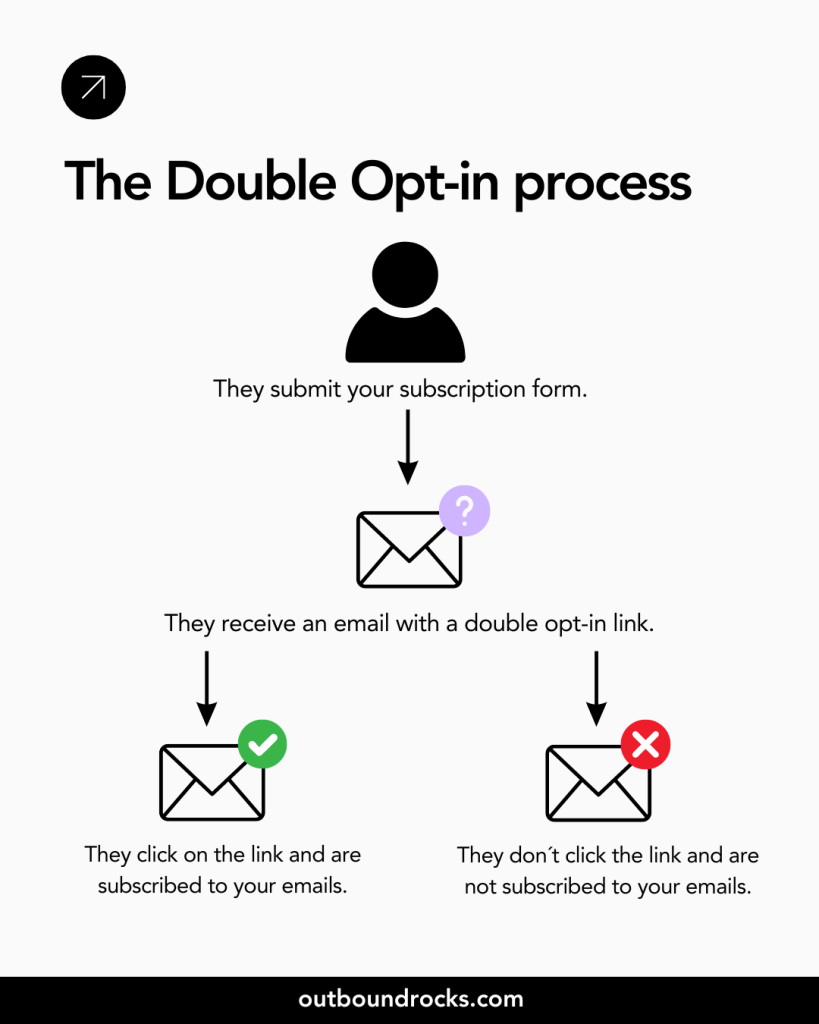Your email marketing list is a valuable asset. It provides a direct line of communication to potential and existing customers.
However, an important metric to monitor is the unsubscribe rate, which is the percentage of subscribers who opt out of receiving your emails.
This article provides a clear explanation of the unsubscribe rate and offers actionable strategies to reduce it, ensuring that your email marketing efforts resonate with your audience and deliver optimal results.
Read on for the insights and tools you need to control unsubscribe rates and maximize the impact of your cold email marketing efforts.
TABLE OF CONTENTS
– What is email unsubscribe rate?
– How to calculate the email unsubscribe rate?
– Why do people unsubscribe?
– 7 effective ways to reduce email unsubscribe rate
– Conclusions
What is email unsubscribe rate?
Email unsubscribe rate is an email marketing measurement that calculates the percentage of subscribers who choose to stop receiving your emails.
It’s essentially a metric that tracks how many people on your email list click the “unsubscribe” button.
This rate is expressed as a percentage, so a 2% unsubscribe rate means that 2 out of every 100 subscribers unsubscribe.
A high unsubscribe rate can indicate issues with content relevance, frequency, or overall email marketing strategy, and may require adjustments to retain subscribers and maintain engagement levels.
How to calculate the email unsubscribe rate?
To calculate your email unsubscribe rate, divide the number of unsubscribes by the total number of email recipients and multiply by 100.
The resulting percentage is your email unsubscribe rate for the campaign.
For example, let’s say you sent emails to 5000 recipients during your campaign and you had 50 unsubscribes. According to the formula, your unsubscribe rate would be: (50/5000)*100 = 1%.

Why do people unsubscribe?
According to MailChimp, the average unsubscribe rate across all industries is around 0.27%.
What does that mean? It means that a healthy unsubscribe rate is a natural part of email marketing. However, excessive unsubscribes indicate a disconnect with your audience.
Here are some common reasons people hit the unsubscribe button:
- Irrelevant content: People unsubscribe when the emails they receive aren’t relevant to their interests or needs. If your emails are filled with generic promotions or information irrelevant to the category they’re subscribed to, they’re likely to unsubscribe.
- Email overload: Inboxes are bombarded with email every day. If you send emails too frequently, subscribers may feel overwhelmed and unsubscribe to clear their inbox.
- Misleading practices: Misleading subject lines or content that doesn’t live up to its promise can erode trust. If subscribers feel tricked into opening an email, they’re more likely to unsubscribe.
- Lack of value: Subscribers expect to get something out of your emails, whether it’s exclusive offers, informative content, or industry insights. If your emails consistently fail to provide value, they’ll look elsewhere for that benefit.
- Outdated permissions: People’s preferences and needs change. If someone subscribed years ago and your content is no longer relevant to them, they may unsubscribe to refresh their inbox with more relevant sources.
7 effective ways to reduce email unsubscribe rate
Reducing unsubscribe rates is crucial for maintaining maximum engagement and building lasting relationships with your email subscribers.
Here, we’ll explore seven proven methods to reduce unsubscribe rates and boost engagement in your email marketing campaigns.
1. Use double opt-in forms
Implementing double opt-in forms requires subscribers to confirm their email address after signing up, ensuring that only those who are truly interested receive your emails.
This method not only validates email addresses, but also sets clear expectations, resulting in more engaged and committed subscribers.

2. Personalize your content
Tailoring your email content to the interests, preferences, and behaviors of your subscribers increases relevance and engagement.
By leveraging data such as purchase history, browsing activity, and demographics, you can deliver personalized messages that resonate with individual subscribers, increasing the likelihood of retention.
3. Segment your subscriber list
Segmenting your email list based on demographics, interests, or past interactions enables targeted messaging that speaks directly to the needs of specific subscriber groups.
By sending more relevant and timely content, you can increase engagement and reduce the likelihood of unsubscribes.
4. Make emails mobile-friendly
With the majority of emails now being opened on mobile devices, optimizing your email templates for mobile responsiveness is essential.
Ensuring that your emails are easy to read, navigate, and interact with on smartphones and tablets improves the user experience and encourages continued engagement.
5. Give subscribers control over email frequency
Giving subscribers control over the frequency of emails they receive allows them to tailor their inbox experience to their preferences.
Offer subscribers the option to choose their email frequency during the subscription process, or provide easy-to-use preference centers where they can adjust settings at any time.
6. Ask for feedback
Soliciting feedback from subscribers on a regular basis shows that you value their opinions and are committed to improving their experience.
Use surveys, polls, or direct requests to gain insight into what subscribers like and dislike about your emails, so you can make informed adjustments and proactively address concerns.
7. Maintain meaningful engagement
Consistently delivering valuable content, promotions, and offers keeps subscribers engaged and less likely to unsubscribe.
Establish an email cadence that maintains regular communication without overwhelming subscribers, and focus on building a relationship based on trust, transparency, and mutual benefit.
Conclusions
By understanding unsubscribe rates and implementing the strategies outlined above, you can cultivate a thriving email list of engaged subscribers.
Remember, a healthy email list is a powerful asset for nurturing leads, driving sales, and building strong customer relationships.
Are you ready to take your email marketing to the next level? Try our free demo today and discover how Outbound Rocks can help you optimize your sales funnel and connect with your ideal prospects.
